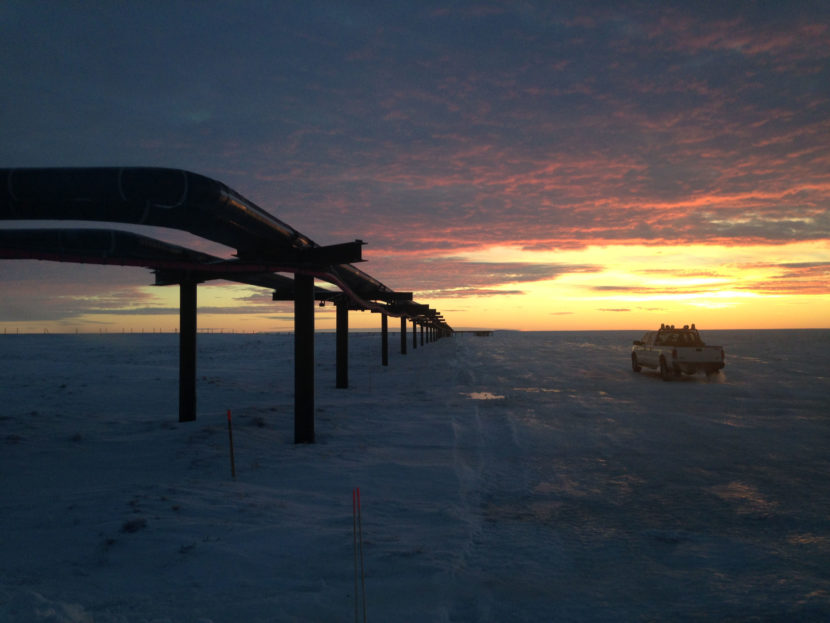
Oil prices are up again.
Alaska North Slope crude jumped above $70 per barrel two weeks ago and has stayed above that mark. While that’s several dollars higher than state economists predicted, it doesn’t quite fill the hole in the state’s budget — and, it doesn’t mean oil prices are going to stay up.
Still, when oil prices inch up it adds up fast for the state.
“Once you’re in the $70s you’re getting maybe $80 million dollars or so of additional revenue for each dollar of oil price increase,” Alaska Department of Revenue Chief Economist Dan Stickel said.
Each year, Stickel’s department puts out a forecast for the price-per-barrel of oil. Right now, prices are well above the $63-per-barrel price state economists predicted for the next fiscal year.
But, in Juneau, lawmakers are still leaning toward balancing the budget using money from Permanent Fund earnings.
That’s because prices are still well below the $91 Stickel said the state would need to fill the $2.5 billion hole in the state’s budget.
If the legislature does decide to draw from the Permanent Fund earnings, Stickel said it would take about $72 per barrel to balance the budget.
“So right around current prices,” Stickel said.
But the effect oil prices have on Alaska’s economy is much broader than just the impact to state spending.
Institute of Social and Economic Research economist Mouhcine Guettabi said another pressing question is how the uptick in prices could affect jobs and capital spending in the private sector — that is, money that companies spend on property or equipment or to take on new projects.
“Nobody knows the answer to that,” Guettabi said. “I think what we can say is … firms have adjusted to lower levels of employment and so how quickly will they ramp up in terms of adding employees is the really million dollar question.”
Alaska is in a recession. What what will it take for companies to start hiring again, to pump more money into local economies?
That is not a simple question to answer. Oil development economics are dramatically different between fields. It’s not as simple as producers turning the spigot on and off whenever the math works out in their favor.
Glacier Oil and Gas Chief Executive Officer Carl Giesler has some insight. Glacier is a smaller, independent oil & gas company in the state – so its economics aren’t necessarily the same as those of ConocoPhilllips or BP.
But Giesler said there are some fundamentals to the relationship between oil prices and companies investing in Alaska.
To get an idea of why companies haven’t rushed to hire more workers or bring more fields online, Giesler said it’s helpful to look at oil futures. Basically, oil futures are contracts that allow traders to buy and sell oil that will be delivered months or years later.
This becomes kind of a prediction for what the price of oil could be.
“The punchline is that even though oil prices are up meaningfully over the last three months or so, people are still cautious,” Giesler said.
One reason they’re cautious is that the oil market has shifted into backwardation — basically the future price is less than the current price.
“That backwardation is the one thing that’s giving a lot of companies pause before they really start ramping up drilling, before they really start ramping up hiring. Before they sort of jump in with both feet,” Giesler said.
Still, Giesler said the jump in oil prices is good news.
“I mean, holy cow, we’re above $70, we’re almost at $75 right? You know, fire the gun, lets start running. But, you know, if you look at the futures, you don’t want to run that fast because you know it’s going to be a long race, potentially.”
Rashah McChesney is a photojournalist turned radio journalist who has been telling stories in Alaska since 2012. Before joining Alaska's Energy Desk, she worked at Kenai's Peninsula Clarion and the Juneau bureau of the Associated Press. She is a graduate of Iowa State University's Greenlee Journalism School and has worked in public television, newspapers and now radio, all in the quest to become the Swiss Army knife of storytellers.




